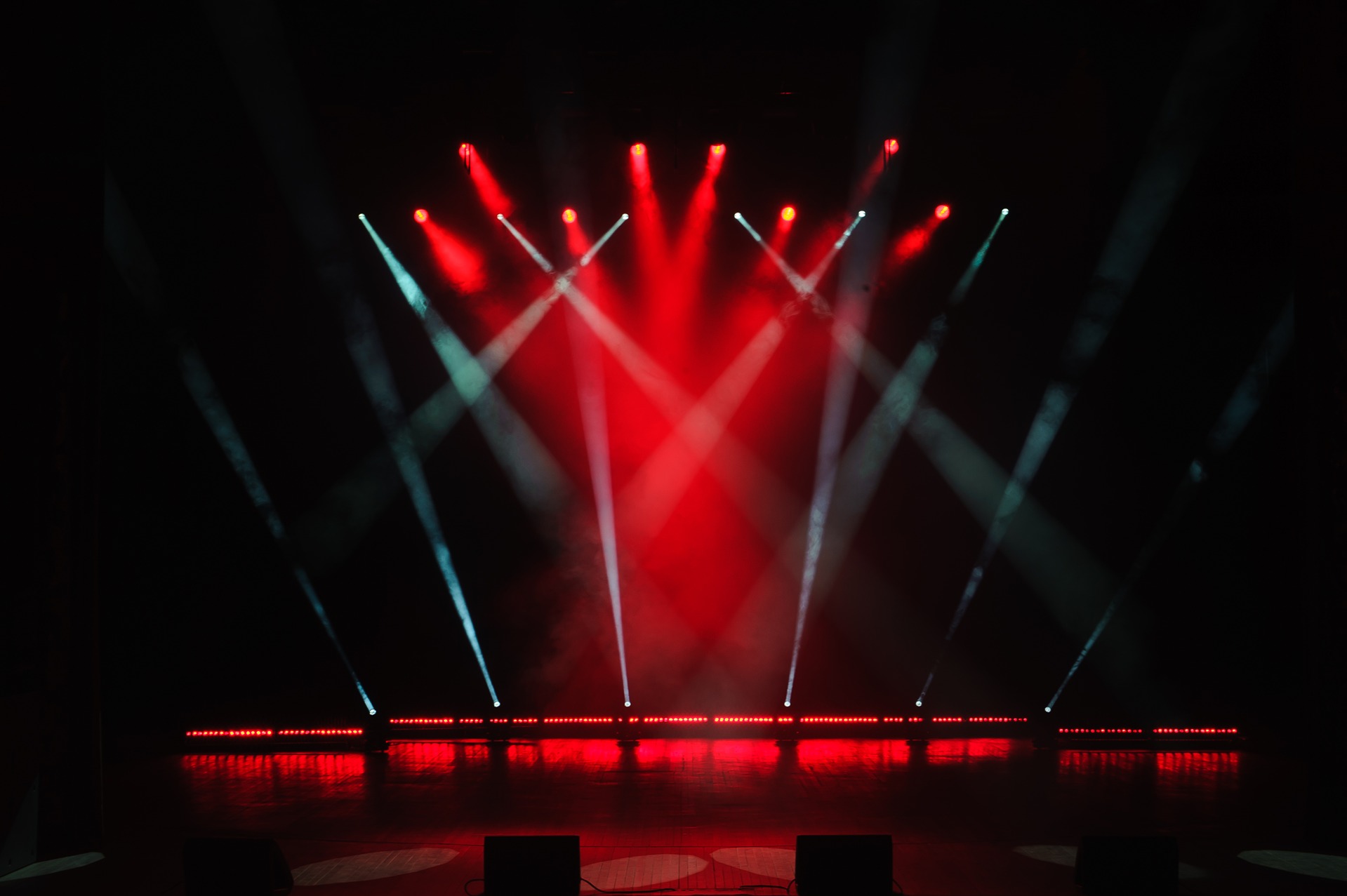Recent Posts
Stage Lighting for Different Types of Performances
Stage lighting design plays a critical role in shaping how an audience perceives a live performance. From the dramatic shadows in a play to the flashing lights at a concert, lighting is more than just illumination—it’s an artistic tool that creates emotion, enhances focus, and amplifies storytelling.
In this article, we explore different stage lighting techniques used across various types of performances such as theatre, concerts, dance, musicals, and even film and TV. Whether you’re a lighting designer, an event student, or a curious enthusiast, understanding the nuances of lighting design for different performances will help you appreciate the behind-the-scenes artistry that makes any live event unforgettable.
Theatre Lighting
When it comes to lighting for theatre performances, the goal is to support the storytelling. Theatre lighting must illuminate the actors clearly while also establishing the mood, time of day, and scene transitions.
Key Lighting Techniques Used:
- Spotlights are commonly used to focus on lead characters or monologues.
- Ellipsoidal Reflector Spotlights (ERS) offer precise control for shaping light around actors or specific areas.
- Floodlights and Fresnel lights are used to wash the stage with ambient light and create an even tone.
The mood is often set using coloured gels and dimmers, allowing smooth transitions between scenes and enhancing the emotional arc of the story.
Tip: In theatre, subtle shifts in lighting can have a strong emotional impact. Knowing how to design contrast and shadow is crucial.
Concert Lighting
Unlike theatre, concert lighting techniques are designed for excitement, rhythm, and audience engagement. Lighting becomes part of the performance itself.
Common Techniques in Concert Lighting:
- Moving lights that shift with the beat of the music.
- Strobe lights for dramatic, pulsing effects.
- LED wall lighting and colour changers that sync with sound.
For large-scale concerts, designers use software to choreograph lights that move in perfect harmony with the music setlist. Here, lighting is as much a visual performance as the artist on stage.
Tip: Planning the lighting in sync with musical cues can turn an ordinary concert into a sensory experience.
Dance Lighting
Dance lighting design focuses on enhancing the body’s movement. The light must support the dancer’s motion and bring out the elegance of choreography.
Ideal Lighting for Dance:
- Side lighting enhances the contours of the body, creating dynamic shadows.
- Backlighting adds dimension and helps separate dancers from the background.
- Soft washes help maintain consistency in mood without overpowering the movement.
Lighting needs to be timed with choreography for maximum impact. Soft hues are often used to support the fluidity of classical dances, while vibrant colours work best for modern or Bollywood-style performances.
Tip: Avoid overhead lighting alone in dance—it flattens the look. Use angles to sculpt and highlight motion.
Musicals & Opera Lighting
Stage lighting for musicals and operas must handle quick shifts in emotion and storytelling. The lighting has to move from intense solos to ensemble numbers, often within seconds.
Lighting Techniques for Musicals and Opera:
- Colour washes that change with the tone of the song.
- Follow spots to track lead performers through complex choreography.
- Dramatic lighting contrasts during plot twists or climaxes.
Because of the expressive nature of musicals, lighting must match the intensity of both dialogue and music, making the visual experience as rich as the audio.
Tip: Layered lighting can help differentiate between dream sequences, flashbacks, and reality on stage.
Film and TV Lighting
Though technically not part of live stage performance, film and TV lighting borrows heavily from stage lighting design principles. The difference lies in lighting for both the camera and the eye.
Techniques Often Used:
- Three-point lighting for interviews and close-ups.
- Softboxes and LED panels to control shadows and maintain natural skin tones.
- DMX-controlled intelligent lights for dynamic TV set backgrounds.
For live shows or reality TV filmed on stage, lighting has to strike a balance between visibility for the live audience and flattering visuals for the camera.
Tip: Consistency in lighting across shots ensures smooth post-production editing.
Why Lighting Design Matters Across Performances
Mastering stage lighting techniques is essential because lighting:
- Directs the audience’s focus.
- Sets the mood and emotional tone.
- Defines the visual identity of a performance.
- Enhances timing, cues, and transitions.
Whether you’re designing a classical drama, a pop concert, or a Bharatanatyam recital, lighting should never be an afterthought. It is integral to the performance’s success.
FAQ
What is the best lighting for theatre performances?
A combination of spotlights, floodlights, and ambient lighting creates effective lighting for theatre performances.
How is concert lighting different from theatre lighting?
Concert lighting is dynamic, using moving lights and strobes to sync with music, while theatre lighting is more focused on mood and storytelling.
What lighting works best for dance performances?
Side lighting and backlighting are ideal for highlighting body movement in dance lighting design.
Is stage lighting important in musicals?
Yes, stage lighting for musicals plays a huge role in setting emotional tone, scene transitions, and spotlighting performers.
What are performance lighting solutions for small venues?
LED PAR cans, manual spotlights, and dimmable floodlights offer cost-effective performance lighting solutions for small stages.
Do film and TV sets use the same lighting as theatre?
They share techniques, but film and TV lighting is adjusted for camera settings and often softer to suit filming needs.
How do I learn proper stage lighting design?
Enroll in a professional course or workshop focused on lighting design for different performances, including hands-on training and tech setup guidance.

